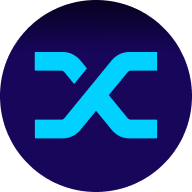Au milieu du réseau Ethereum en raison des problèmes d'évolutivité et de la congestion croissante, Synthetix est apparu comme une solution innovante pour relever ces défis. Avec son token natif SNX, Synthetix fournit une plateforme robuste pour les actifs synthétiques dans le secteur de la finance décentralisée (DeFi). Cette plateforme va au-delà des offres typiques de DeFi, en présentant une approche distinctive de la tokenisation et de la gestion d'actifs qui débloque de nombreuses opportunités dans l'espace des crypto-monnaies.
Qu'est-ce que c'est Synthetix?
Synthetix est un protocole DeFi fonctionnant sur le réseau Ethereum, en permettant la création d'actifs synthétiques. Ces actifs, appelés Synths, répliquent la valeur de divers autres actifs, y compris les monnaies fiduciaires, les crypto-monnaies, les matières premières et les actions. L'objectif principal des Synths est d'offrir aux utilisateurs une exposition à ces actifs sans avoir besoin de les posséder physiquement. Le Synthetix Network Token (SNX) est le token natif du protocole et est utilisé comme garantie pour l'émission de Synths.
L'équipe de Synthetix
L'équipe de Synthetix, dirigée par Kain Warwick, est un groupe de développeurs et d'entrepreneurs expérimentés. Parmi les membres de l'équipe, on peut citer Dustin Fontaine, le directeur technique, Justin Moses, l'ingénieur logiciel principal, Clint Ennis, l'architecte principal, et Sunny Vempati, l'architecte front-end. En outre, l'équipe est complétée par Andrew Porter, directeur non exécutif, Marcelo D., partenaire de Cluster Capital, et Brian O'Farrell, cofondateur de Furthr.
Comment fonctionne Synthetix?
Synthetix fonctionne en utilisant des oracles décentralisés, qui sont fondés sur les smart contracts des protocoles de découverte des prix, afin de surveiller les prix d'actifs spécifiques. Ce faisant, la valeur des Synths est liée aux actifs sous-jacents, ce qui permet aux utilisateurs d'être exposés à ces actifs sans les détenir directement.
Les utilisateurs peuvent bloquer leurs tokens SNX comme garantie pour frapper de nouveaux Synths. Ces Synths nouvellement créés peuvent être échangés sur le Synthetix Exchange sans subir de dérapage. Ceci est possible grâce à un mécanisme qui brûle les Synths vendus et en frappe de nouveaux, en assurant ainsi l'équilibre de l'offre globale.
SNX tokenomics
Les tokens SNX jouent un rôle essentiel dans l'écosystème Synthetix, car ils servent de garantie pour la création de synthèses. Lorsque les détenteurs de SNX font du staking sur leurs tokens dans le cadre du protocole, ils ont accès à des récompenses et à la possibilité de participer à l'échange de Synth. Notamment, la valeur des tokens SNX est directement liée à la valeur des synthés qu'ils servent à garantir, ce qui établit un lien crucial entre le token et les actifs sous-jacents au sein du système.
Cas d'utilisation de Synthetix
Synthetix offre plusieurs cas d'utilisation qui tournent autour des actifs synthétiques. Grâce aux Synths, les utilisateurs peuvent s'exposer à une large gamme d'actifs sans avoir besoin de les posséder directement, car les Synths sont liés à la valeur des actifs sous-jacents.
La plateforme permet aux utilisateurs de négocier des synthèses directement sur le Synthetix DEX, sans passer par des intermédiaires. En outre, étant construit sur la blockchain Ethereum, les utilisateurs peuvent déposer des Synths sur des protocoles DeFi sélectionnés, en fournissant de la liquidité et en générant des intérêts.
Les détenteurs de tokens SNX peuvent faire du staking sur leurs tokens et gagner des Synths en récompense, ce qui renforce encore leur participation à l'écosystème.
Distribution de SNX
L'offre totale de tokens SNX est plafonnée à 259 562 746. La distribution est répartie comme suit:
- Soixante pour cent par le biais de l'initial coin offering (ICO).
- Trois pour cent pour les bounties et les incitations marketing.
- Cinq pour cent pour les partenariats.
- Douze pour cent pour la fondation.
- Vingt pour cent pour l'équipe et les conseillers.
L'avenir de Synthetix
La feuille de route de Synthetix prévoit l'élargissement de son offre d'actifs synthétiques aux actifs traditionnels tels que les actions et les obligations. Ce mouvement stratégique vise à combler le fossé entre le domaine financier traditionnel et l'espace blockchain, en permettant aux utilisateurs d'accéder à un plus large éventail d'opportunités d'investissement.
En outre, l'équipe de Synthetix s'engage à améliorer l'expérience utilisateur en renforçant l'accessibilité et la convivialité de la plateforme, pour répondre aux besoins des utilisateurs chevronnés comme des nouveaux utilisateurs.



















Données sociales